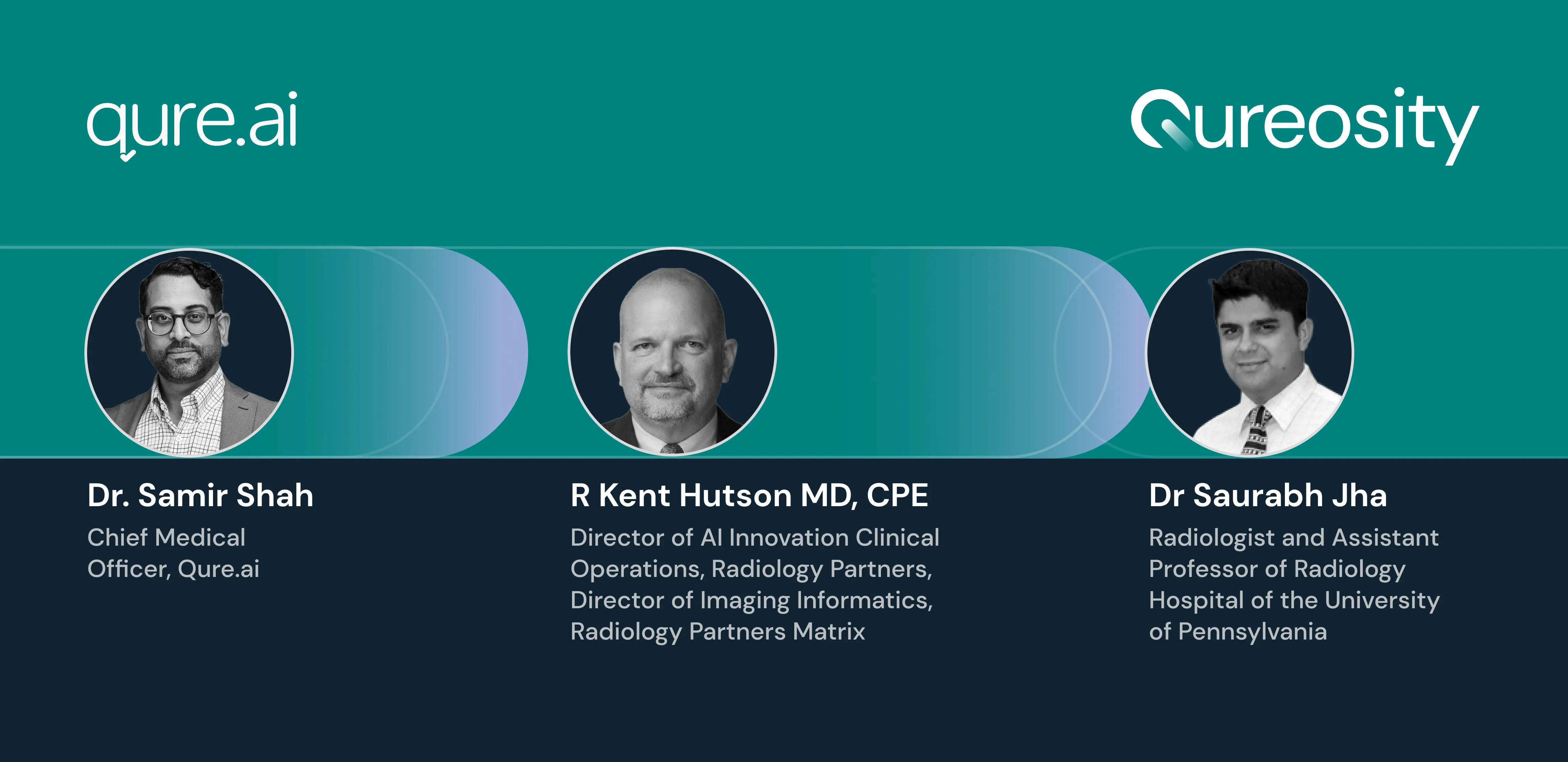Summary
Back
The webinar hosted by Samir Shah, Chief Medical Officer at Qure.ai, featured a discussion with R. Kent Hutson from Radiology Partners Matrix and Dr. Saurabh Jha from the Hospital of the University of Pennsylvania on the use of generative AI and Large Language Models (LLMs) in radiology. Both guests shared insights based on their extensive experience in radiology, highlighting the evolution of dictation technology and their perspectives on the potential impacts of AI in their field.
Introduction
Samir Shah introduced the session and his esteemed guests, highlighting their significant contributions and expertise in radiology. He set the stage for a discussion on the transformative potential of generative AI and LLMs in radiology, beginning with their experiences with dictation technologies, from Dictaphones to voice recognition.
Key Highlights
- Transition from Dictaphone to Voice Recognition: Dr. Jha shared his journey from using Dictaphones to adopting voice recognition technology, noting that while voice recognition improved report delivery speed, it did not necessarily make the radiologists' job easier. Kent Hutson discussed the progression from cassette-based dictation to voice recognition, emphasizing the efficiency gains but also the challenges posed by transcription errors.
- Generative AI and LLMs in Radiology: The conversation shifted to the potential of generative AI and LLMs to revolutionize radiology reporting. While there was acknowledgment of the technological brilliance of these tools, there was skepticism about their practical utility in improving radiologists' work, particularly concerning automating impression generation and structuring reports.
- AI's Role in Enhancing Radiologist Efficiency: Despite reservations about some aspects of generative AI, there was interest in how AI could assist in data mining from electronic medical records (EMRs) and previous radiology reports to provide radiologists with relevant contextual information, thereby reducing non-interpretive workloads.
- Future of Radiology with AI: The discussion also touched on broader implications for the radiology profession, including concerns about increased workload without corresponding improvements in job satisfaction or compensation. There was a call for a pragmatic approach to integrating AI into radiology, focusing on areas where it could genuinely augment human capabilities without replacing radiologists.
Conclusion
The webinar concluded with an acknowledgment of the complex relationship between radiologists and AI technology. While there is clear potential for AI to streamline certain aspects of radiological practice and improve efficiency, there is also a need for careful consideration of its impact on the profession, including workload and professional autonomy. The conversation highlighted the importance of leveraging AI to enhance the radiologist's role rather than diminish it, with a focus on improving patient care through technology.
